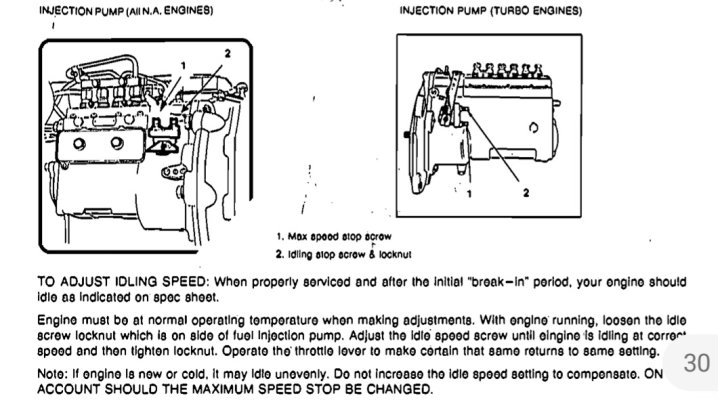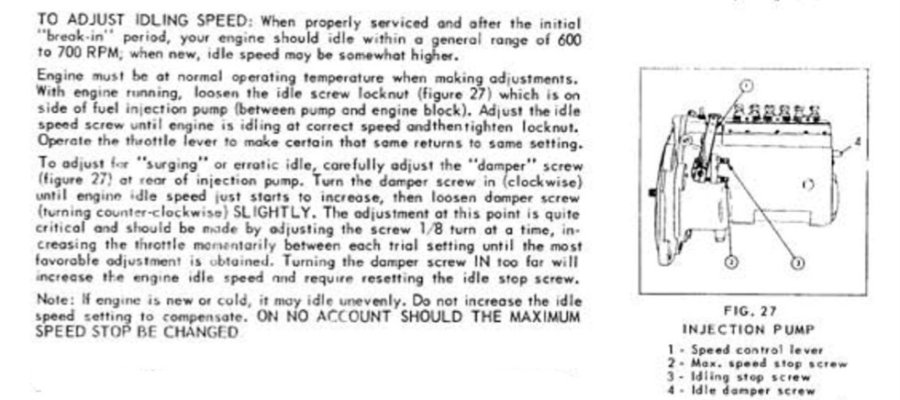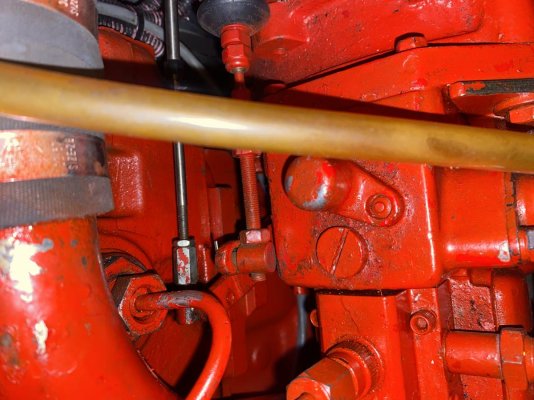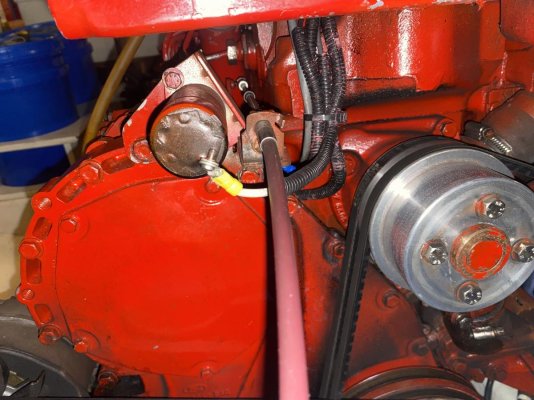Hey GoldenDawn,
Do me a favor and just be sure to check the throttle cable, especially at both ends.
My concern is that the idle could have been set too low for decades, but the throttle cable could have been set with a bit of an advance.
If the throttle cable got bumped out of its clamp, or the clamp got broken, or something got moved, it may now be unreliable. You coukd find yourself trying to slow down pulling into a slip...and that cable is dangling at one end or another, and you are "pushing spaghetti" not your throttle.
I earned the nickname "Capt. Crunch" a while back pulling back into my marina after an otherwise wonderful trip. I'd had a transmission rebuilt and the installer never put the safety wire back.
It was great for a trip or two, but eventually the clamp vibrated open and when I went to shift into reverse I didn't get reverse. I thought the wind was stronger than expected, so gave it significant throttle to seemingly no effect (it was actually a burst forward). Then I put it into neutral, ran down to the lower helm and repeated that exercise.
By the time I focused back on the situation behind the boat, I realized I was going much faster. I was still in forward, not neutral (or reverse).
I couldn't figure which engine it was fast enough because a wind was keeping me straight vs turning, so I shut off both engines. Someone with more experience may have been able to sort it at the upper helm, vs wasting time trying the lower helm, and dock on one engine. I thought I had more time...but I also thought both engines were in neutral.
Regardless, in my case I was out of time and drifted into a friend's boat. Almost got out of it without any damage. Crew was fendering the back as I was pushing the bows apart walking mone past his. My arms proved a few inches to short to fully control it and I bumped part of his bow rail with a metal rub rail protector on my boat. It bent his rail a little and scratched it a little.
I founded a welder and had it fixed for him. But somehow, I am still known as Capt. Crunch!!!!!!!!!
More seriously, it could have been a LOT worse. A diver coukd have gotten run over. The anchor could have come past my dock and hit a person. There are so many really bad ways a lot of control like that coukd have ended.
I ran into the guy who installed the transmission a couple of months later on the dock. I mentioned it to him. He said the safety wire isn't needed most of the time. Sigh.
What to say? I have 4 new things on my pretrip checklist now (2 engine + 2 transmission control cable clamps and safety wire).
This is a really long way of strongly suggesting to check the control system because something change....or, better yet, just because...
As an aside, the same boat I hit almost had a Capt. Crunch moment of its own a few weeks later. It has electronic controls and a battery died. The engine and transmission controls died coming in.
In that case, a passenger thought to try the switch to parallel the batteries and they came back to life just in time to avoid driving over the dock. Different systems. Different failure modes. Different things to check. I guess.





